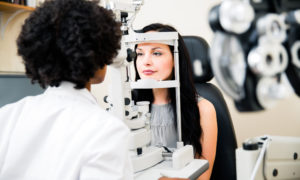May 10, 2023

Preliminary results from a new study indicate that individual question responses within the widely-used Ocular Surface Disease Index (OSDI) symptom questionnaire can be correlated to specific clinical measures, providing eyecare professionals better insight on treatment pathways. The CooperVision-supported work was presented at the ARVO 2023 Annual Meeting.
Association of Clinical Signs with the Ocular Surface Disease Index: Preliminary Results from the Multicenter Neurosensory Abnormalities in ocular SurfAce Disease Study (Hom M., et al.) from the NASA Study Group probes deeper than past reports of overall OSDI score correlations. The multicenter, prospective, cross-sectional investigation assessed patients who presented for ocular surface disease care. In addition to completion of the OSDI, measures were taken for tear break-up time (TBUT), corneal fluorescein staining (CFS), lissamine green conjunctival staining (LGS), Schirmer’s test and meibomian gland grading (MGG).
Other Articles to Explore
Preliminary analysis included 250 participants across 13 sites. Significant correlations were identified between decreased TBUT and difficulty reading (r=-0.166, p=0.009). Increased CFS was associated with increased frequency of gritty sensation (r=0.166, p=0.008). Decreased Schirmer’s test was associated with increased symptom frequency in windy conditions (r=-0.195, p=0.002). MGG and LGS show no significant correlations.
“These outcomes should help eyecare professionals derive even more value from their OSDI questionnaires, pointing them toward potential underlying issues and treatments,” said Anna Sulley, BSc(Hons), MCOptom, FAAO, FBCLA, Director, Global Medical Affairs at CooperVision. “We’re privileged to partner with some of the top researchers and institutions in ocular science, with the aim of improving fundamental clinical practice. The works being shared at ARVO 2023 reflect this collaborative spirit.”
An additional CooperVision-supported study on display in New Orleans demonstrated the effect of ceasing and then restarting contact lens use after three months in symptomatic wearers as measured by psychophysical responses to repetitive cooling stimuli.



























